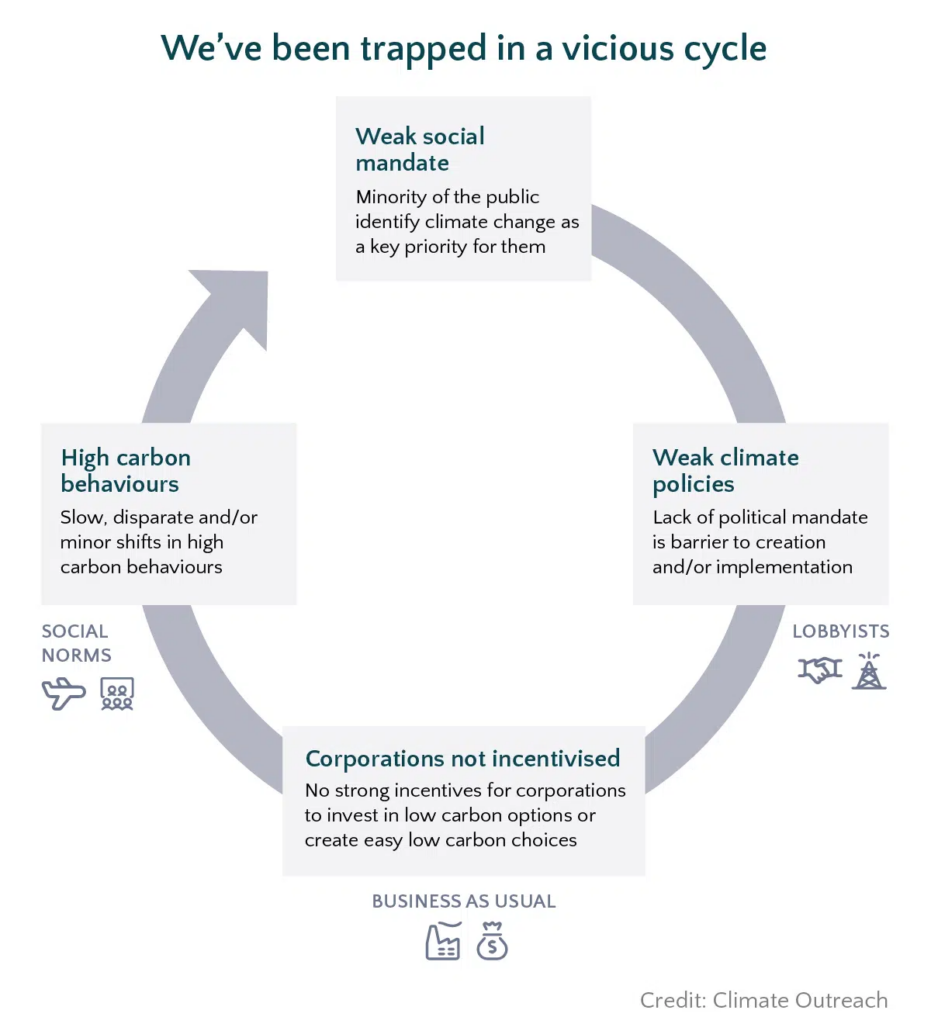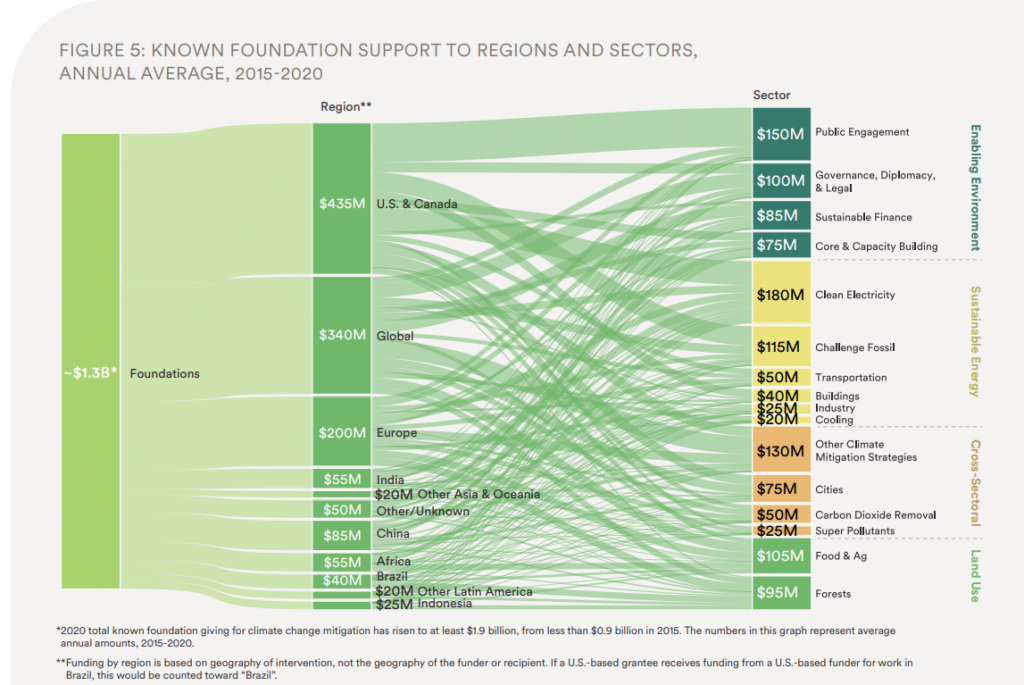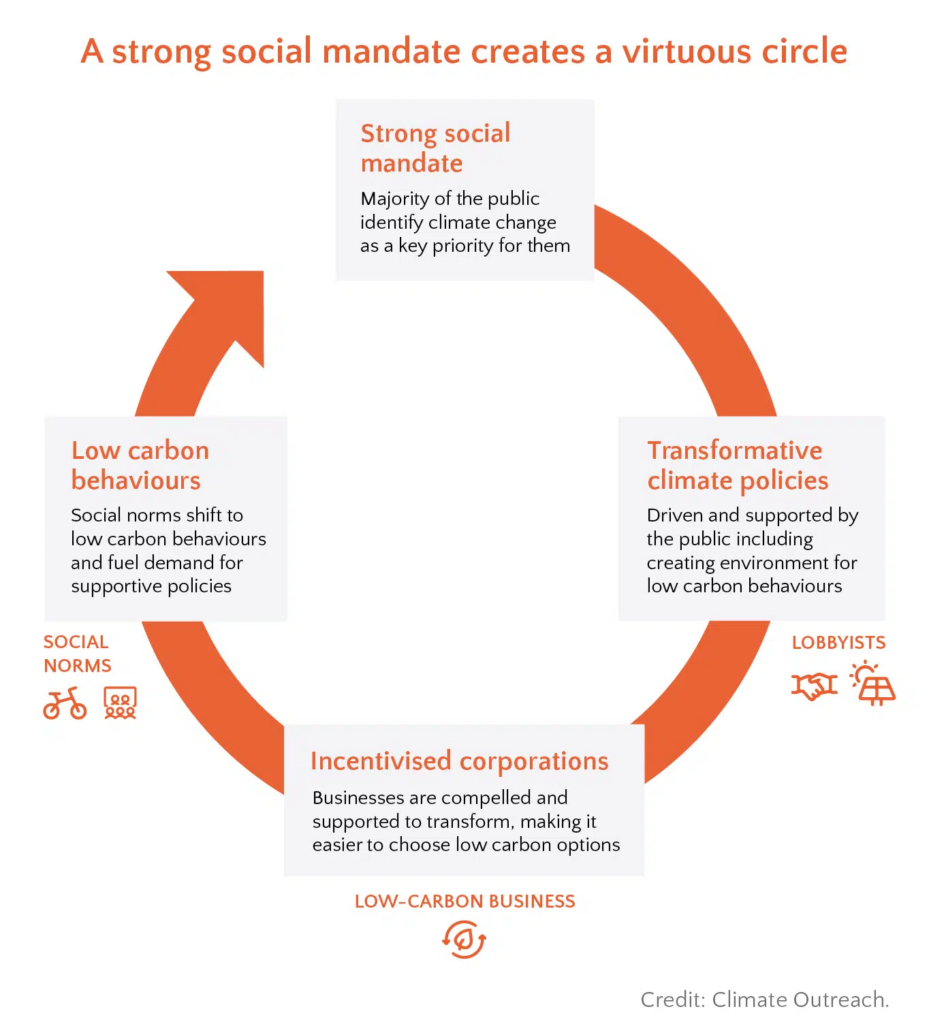How philanthropy can drive people-centred climate action

In all of the critical talk about fossil fuels and low carbon technologies, it is easy for philanthropists to forget that people are central to the climate change issue. People cause it, people suffer from it, people make policy good and bad, and to see real progress people have to be persuaded to prioritise climate change among their many other pressing concerns.
The public and climate change
The International Energy Agency’s 2021 “Net Zero by 2050” report laid out, in some of the starkest terms to date, that net zero emissions could not and would not be achieved without “the active and willing participation of citizens”. This report was followed last month by the IPCC WG3 report on mitigation, stating that an engaged public could reduce greenhouse gas emissions by 40-70% by 2050.
Net zero will require a mix of low carbon technology and the active engagement of citizens (e.g. installing solar water heaters), behavioural changes (e.g. flying less) and demand for policy change and corporate investment. But without public buy-in, governments do not feel the political pressure to urgently increase their ambition in cutting emissions. And so long as corporations have a social licence to promote high carbon behaviours, they too have little incentive to commit to the radical emissions reductions necessary.
We’ve been trapped in a vicious cycle.

There are three main reasons why climate action is still dogged by a weak social mandate:
- Around the world, large segments of society see climate narratives dominated by the “other” or “people not like me”, fuelling polarisation and playing into the hands of powerful vested interests trying to undermine action.
- In countries where concern is high, those same people feel “nothing I can do will ever make enough difference”. Concern is what people feel, but engagement is what they do, what they buy and how they vote. This lack of efficacy stops public concern turning into action and keeps inactive politicians and corporations in business.
- There is a significant body of evidence around climate change communication and from other sectors on how to drive public engagement, but this is rarely utilised. Until we mobilise this understanding we can’t build and sustain cross-societal support.
Philanthropy and public engagement on climate change

On paper (see above), public engagement is one of the best funded areas in climate change. But as we dig behind the numbers, it’s worth highlighting three important aspects:

- Public engagement remains a weakly defined catch-all term, with little common understanding of what effective public engagement looks like, and few dedicated programmes across government or philanthropic investment (in contrast to all other key areas of climate action).
- The bottom line hides a shocking global disparity: The vast majority of this work is happening only in the United States and Canada. There has been virtually no funding in the global south for research into attitudes and messaging or resourcing for active engagement.
- In the countries where funding has been available for climate communications (here we largely have to thank philanthropy as little government funding has ever gone to public awareness campaigns on climate change), it has tended to focus on people as instruments of influence. Funding has rarely gone to building deep, broad, sustained public support for climate action, equivalent to the almost universal support we see for health or education.
How philanthropy can support a social mandate and create a virtuous circle
If we are serious about a 1.5 degrees world, then we need to get serious about public engagement. Philanthropists have a number of roles they can play in championing good public engagement:
- Supporting campaigns and initiatives to call on governments, businesses, and international agencies to recognise their legal obligation to engage citizens[1]
- Sharing best practice in effective public engagement from other sectors, such as health, education and culture
- Investing public engagement infrastructure and means of measuring real world impact
Conclusion
Though there is much work to be done, increasingly philanthropists are stepping up, evidenced by the establishment of the #PhilanthropyForClimate movement. And thanks to organisations like Philea, the idea that all foundations regardless of their mission should engage in fighting climate change is gaining ground.
[1] United Nations (1992) United Nations Framework Convention on Climate Change, Article 6, Article 4.1 (i).
Photo by Dave Warren on Climate Visuals.
Authors

